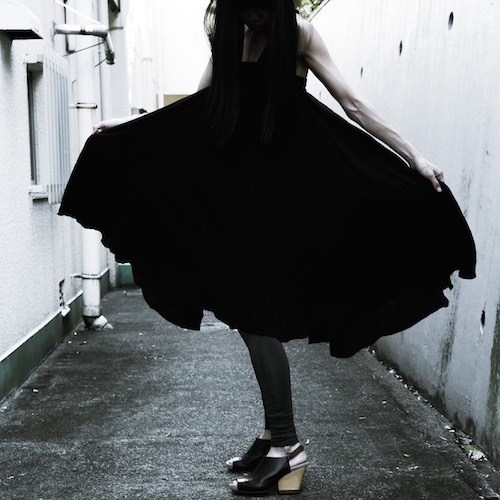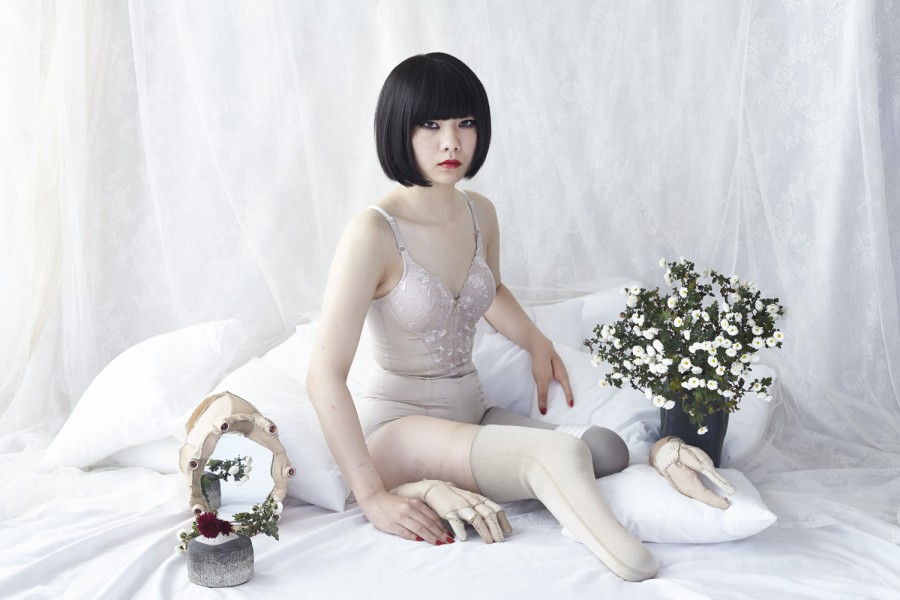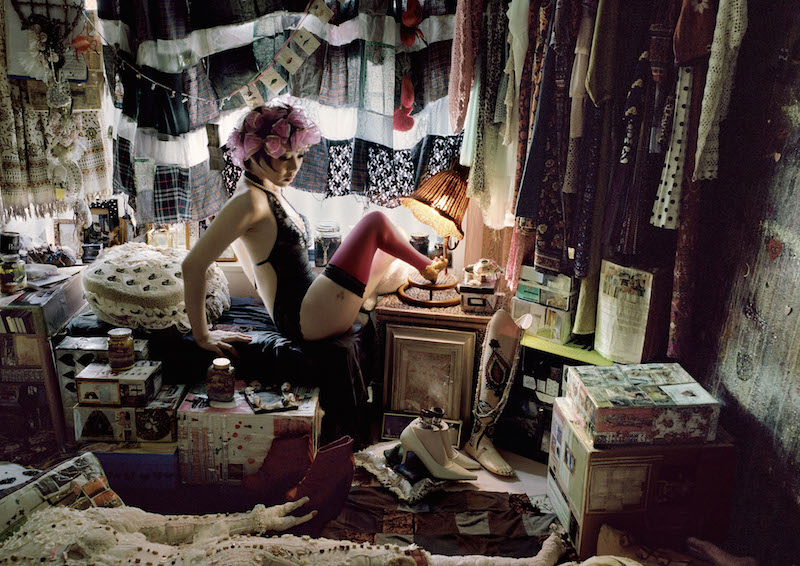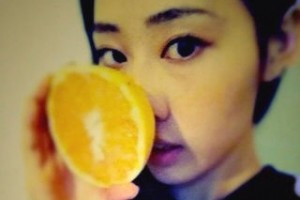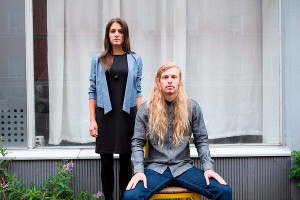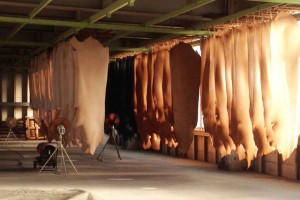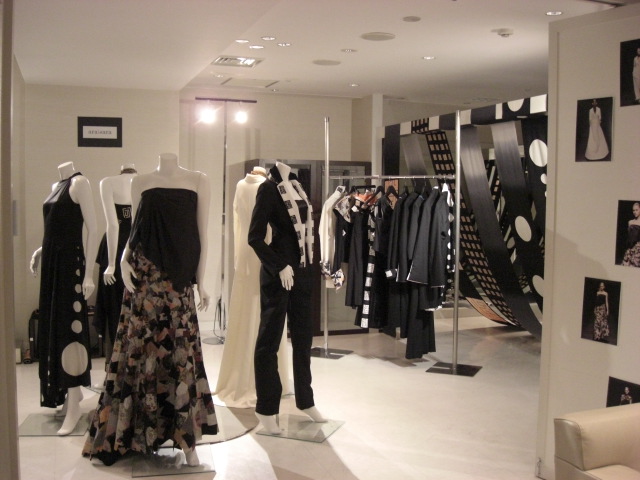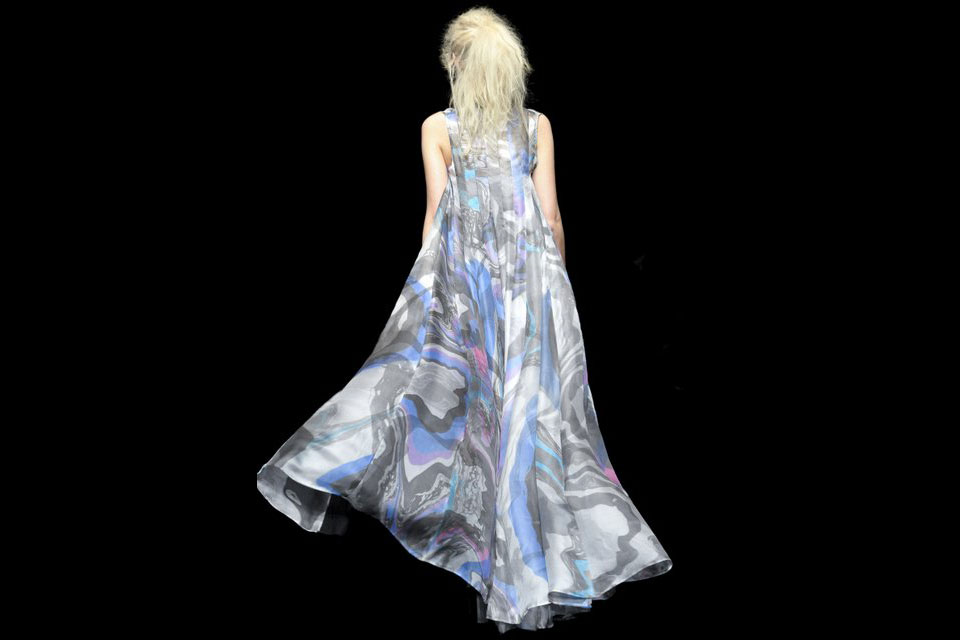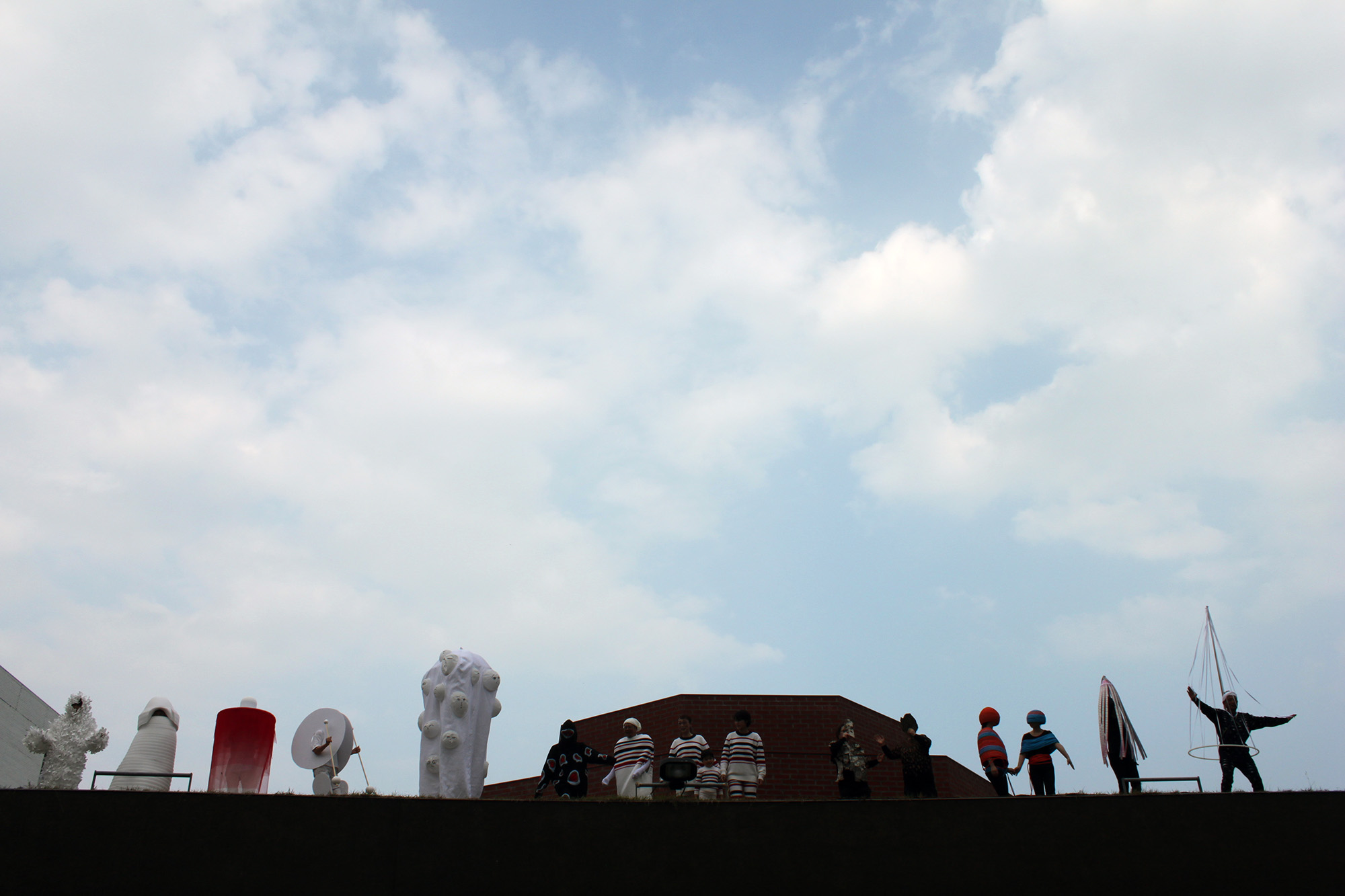Designer Sara Arai started her prêt-a-porter line araisara in 2008, to express the connection between traditional oriental culture and fashion. Arai shows her collection at JFW since 2009-10A/W. She has been invited from several countries as Russia, India and Malaysia for express her fashion show abroad. She has joined Paris fashion week on schedule from 2013.S/S. to present Asian culture to the world from Japan.
“Hibiki (Echo)”
Flowing Atmosphere
Echoing Sound
Resounding Voice
Spreading Wave of Consciousness
From people to things
From things to people
Soon Dwells the People’s Emotions
Never Stopping Sound of Life
Forever Echoing the Sound
Echo Forming another Sound
This time, let me introduce the 2010 S/S Collection, “Hibiki (Echo).”
This collection represents this message: Anything in the world that has an effect comes from an original action committed by someone else. Without action, nothing spreads. So let’s make action happen.
What made me think about this was the death of my “Granny”, who, for 17 years, sewed my pieces for me. She sewed my haute couture pieces, private orders from my customers, and samples of original products for luxury manufacturers. In my debut collection, there were many pieces that were mostly completed by her. She passed away after the Japan Fashion Week (JFW) debut collection, and my second collection was inspired by her; how she put her feelings in the clothes and what happens to those feelings remain within the clothes.
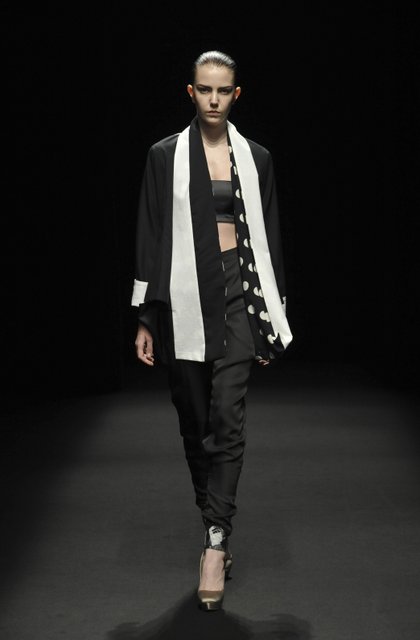
Bustier Made By Granny(araisara 2009 AW ‘Toki’)
During the 17 years of working with her, she never mailed me the finished clothing. She always delivered them herself. She was very sincere to my customers; she wanted to be responsible for the product to the very last moment—until it was certain that the responsibility had dropped to me. Whenever she received an order, she always came to my atelier and heard the description of the order in person; we would then go over the specification documents together.
Granny usually worked from her home, so she rarely went outside. Whenever she came to my atelier, she was dressed very nicely, with a hat on. She would tell me: “Because I don’t go out so often, it’s really my pleasure to come here to see Mei-san.” But I do not think that was her only reason. For her, delivering customers’ clothing was such an important thing; so she dressed up nicely and carefully brought the clothing to me. Making a delivery was an important part of her creations.
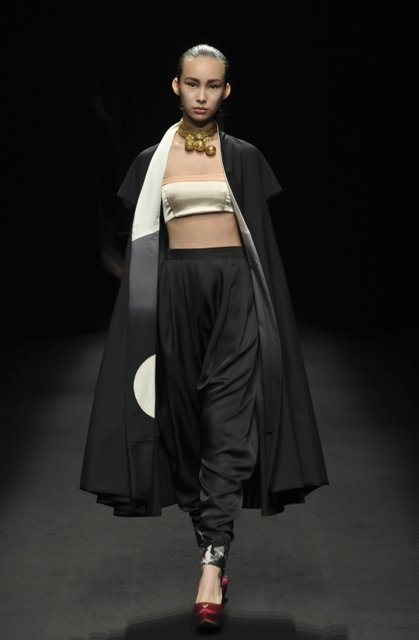
Coat Dress made by Granny(araisara 2010 AW ‘Toki’)
Granny was diagnosed with cancer four or five years before my debut collection was released. However, she strongly wished to be part of the debut collection, so I commissioned her to make some of my collection pieces.
She came to see to my runway show, and right after it ended, she immediately called me. She was very excited because all the guest customers who sat around her had been wearing clothing that she had made: “On my left, there sat a lady in a purple jacket that I had sewn, and on my right, she wore a dress from few years ago… The suit that person in front of me was wearing was also one that I made…” She remembered everything she had made.
Granny passed away soon after the JFW debut collection, but I was unable to be with her in her last moments. Rather than seeing her ill, she strongly wished me to see her only after she was cremated and her portrait was displayed. Thus, she told her son not to tell me which hospital she was in. She told her son that because whenever she dressed up to see me, it would be embarrassing for her to have me see her like that. She told him to let me know when her portrait was ready.
She also left her son a message to give me. It went something like this:
“Mei-san, you let me work on your clothing that would be sold at department stores, and you let me work on private order items. I was able to see customers wearing these clothes at the runway show. In the end, I was also able to work on your collection pieces, which have a message to deliver and that everyone sees. I was able to see the collection. My life was very happy, and it was all for you.”
Because she had a beautiful life and she was grateful for it, I think she wanted me only to see her when she appeared beautiful.
Although she is gone, customers still wear her clothes. We have photographs of the debut collection, so anyone can see her clothes, even now. Many of the people do not know her name or the fact that she lived. However, the clothing gained form because she was there. When seeing clothes made by her, someone will be inspired. By cherishing her clothes, someone might alter them after they have become worn, and wear them again in another form. Her life will “echo” and be passed on and on by people: the people who saw the collection and the people who wear her clothes.
Moreover, the fact that she lived is already a big enough action to start something. Although the original form of the action, that is, life, has disappeared, the evidence of her being will continue to influence people.
When it comes to traditional techniques, masterpieces may die out as time passes and people’s taste change. But designers can alter the techniques so that they mesh with modern style, which is what I’m trying to do. And even though they may change their form, there are still things that stay the same that can be passed on. I promised myself with this collection that I shall keep going.
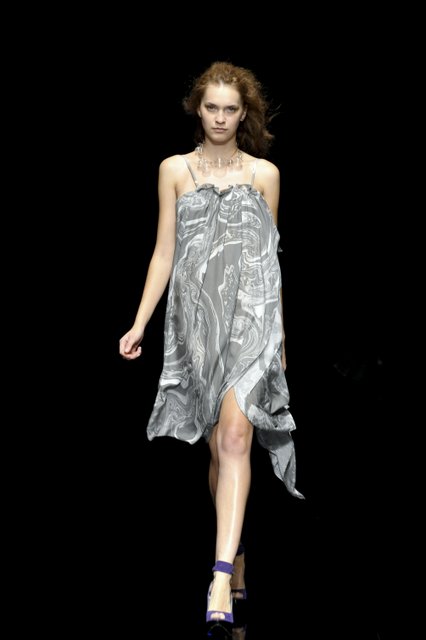
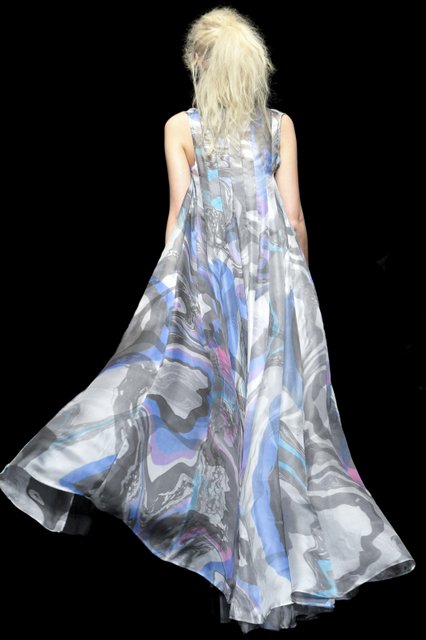
Sumi-Nagashi(2010 SS ‘Hibiki’)
“Sumi-Nagashi (Ink-Marbling)” was the traditional technique I met when preparing for this collection. This was my first time using this technique, but when I first saw it, I felt that it reflected what I have been thinking about.
You place a drop of ink in water and then you drop another to different spot. As the ink spreads on the surface of the water, the two collide and the ink forms a stream by echoing each other. However, it is not water that spreads the ink: even though you don’t feel it, there’s a wind that makes the water move. Thus, artisans called the streams of the marbling “design by the wind.” When a strong wind hits the water, it creates a big ripple and the patterns are dynamic. I believed that the water was responding to the artisan—that it feels the artisan’s wind. And so I started thinking, when there is any kind of action, there is always a response in some way.
Sumi-nagashi is a method of dyeing that records the moment that water answers the wind. It records the moment that the action of each ink effects each other. Usually, I attempt to do new things with traditional techniques, but for Sumi-nagashi, I decided I wouldn’t try anything new, but would simply make a beautiful dress with the fabric.
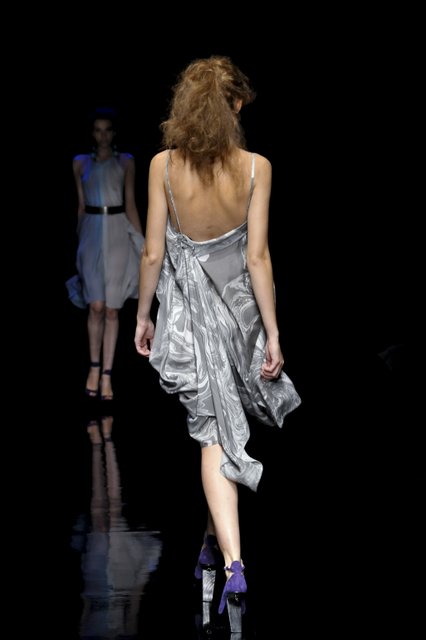
(araisara 2010 SS)
A Sumi-nagashi artisan asked me an interesting question; “What is the difference between a professional artisan and amateur artisan?”
Artisans say the designs of Sumi-nagashi are formed as a result of an accidental effect of natural elements affecting each other. However, artisans must fulfill the requests of designers and clients, so how can you fulfill requests from uncertainty?–The artisan then gave me this answer: Professional artisans understand what might happen under certain conditions, and they make what they want to happen by arranging the desirable conditions. For example, artisans know how the ripples move when sending the wind in a certain direction. So they send the wind in a way that makes the water respond how they want.
There’s wind and there’s water. They are so silent that you may not be aware of them usually. However, they surely exist. The result of how each element echoed each other was printed on the fabric. I was impressed by the process because it is certainly different from digital prints.
Sumi-Nagashi Dye (Ink-Marbling Dye) Sumi-nagashi is one of the oldest methods of dyeing in Japan, dating back to the Heian period (794–1185). On the surface of water, artisans drop black ink/dye and create a copy of the colored streamlines and ripples on paper/fabric. It is the result of the unexpected effect of wind, water, clouds, temperature, and time on each other.

